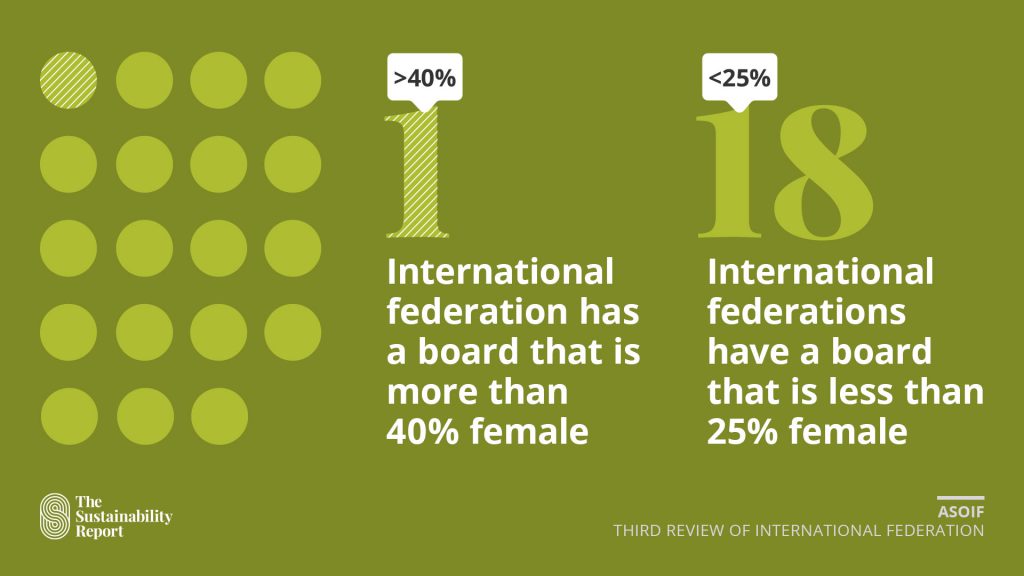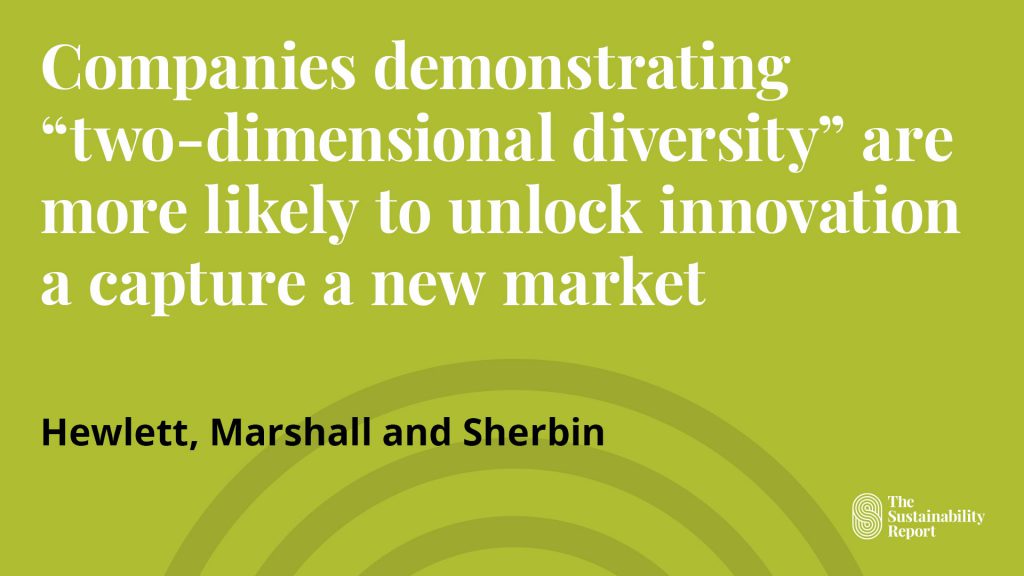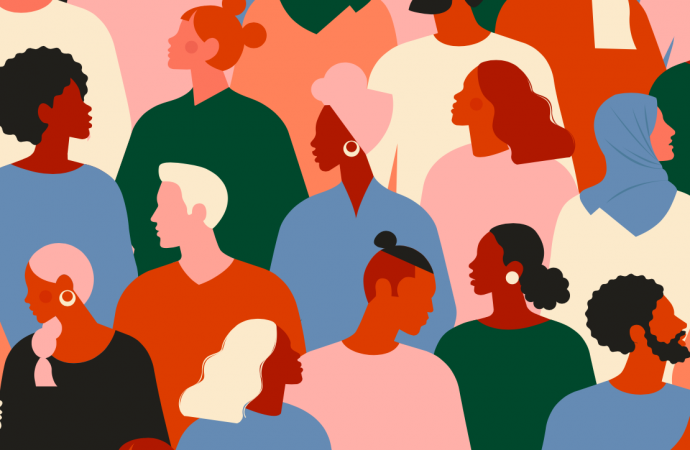The death of George Floyd has pressured many organisations to examine their record on diversity and inclusion. Sport is having its own introspection – but will it change its approach?
“If everyone is thinking alike, then no one is thinking,” said Benjamin Franklin more than 200 years ago, illustrating that, even as a very basic concept, the value found in the diversity of thought and experience has been around at least since America declared its independence in 1776.
Franklin’s perception of what diversity of thought meant will obviously be different to the diversity progressive individuals and organisations will be striving for now. After all, the Declaration of Independence that Franklin presided over may assert that “all men are created equal” with “certain unalienable rights”, but for more than 200 years those rights were generally only afforded to the white male demographic of the US population.
In several nations, both women and people from minority ethnic backgrounds may still feel like they are treated as second-class citizens. The death of George Floyd in the US, at the hands of a law enforcement officer this May, has heightened the feeling among those in the African American community that they don’t share the same liberty as their white counterparts.
Indeed, the nature of Floyd’s death has instigated a conversation around diversity and inclusion, with many organisations embarking on a period of soul-searching about whether their company is diverse enough – particularly at a leadership level – and if they are truly reflecting their customers and other key stakeholders.
There have been many studies exploring the positive impact a diverse workforce and leadership team has on a company’s finances, but McKinsey’s Diversity Wins: Why Inclusion Matters report published last month paints a very clear picture.
Data from 2019 shows that companies in the top quartile for gender diversity on executive teams were 25% more likely to have above-average profits. Those in the top quartile with regards to ethnically and culturally diverse leadership teams outperformed companies in the fourth quartile by 36%.
But the sports industry, in general, doesn’t appear to be totally bought-in on the value diversity can offer.
In Britain, only 3% of board members of national governing bodies are black, while 64% of the governing bodies funded by government grants have no black or minority ethnic representation on their board. Arun Kang, the chief executive of Sporting Equals (the organisation that carried out the research), asserted that all publicly-funded sports bodies should have a minimum of 20% black or minority ethnic representation.
In 2016, the British government established a Code for Sports Governance in an attempt to stimulate both ethic and gender diversity at sport leadership level. While female representation has increased at board level, ethnic and cultural diversity has remained stagnant.
Lack of opportunities
Earlier this week, more than 80 governing bodies and sports organisations in the UK, including the Football Association, the Rugby Football Union, the England and Wales Cricket Board, the Lawn Tennis Association, and UK Athletics, penned a joint statement admitting that they had not done enough to move the needle on confronting racism.
Despite generating almost £1 billion in revenue between them last year and enjoying huge reach in terms of participation and viewing numbers, the organisations, collectively, only have one black board member. Kang told The Guardian that “no amount of positive messaging can hide the lack of opportunities.”
Sport in the US is also guilty of presiding over significant gaps when it comes to diverse leadership. According to 2019 data collected by the Institute for Diversity and Ethics in Sport (chaired by the renowned diversity and inclusion campaigner Dr.Richard Lapchick), several major sporting leagues and institutions are failing to reflect the nation’s diverse population.
The picture looks quite positive when analysing the make-up of individuals who work within actual league headquarters. In terms of race, the NFL, MLB, NBA, WNBA and MLS have at least 28% of their workforce coming from non-white backgrounds. The WNBA and MLS (below) received ‘A+’ grades from the institute for having an ethnically diverse workforce of 46.6% and 40.9% respectively.

This number drastically drops off when looking at the individual teams within those leagues. In the NFL, for instance, only 6.3% of general managers, 5% of chief executives, 12.8% of vice-presidents, and 19.4% senior administrators come from non-white backgrounds. Across the leagues, even these small numbers fall off a cliff when it comes to female representation.
Lapchick believes that this trend is a consequence of the word “diversity” being linked to race more than gender.
“I think pressure from the public revolves much more around racial hiring practices than gender hiring practices,” he tells The Sustainability Report. “If pressure was put on in equal proportions I think those numbers would change.”
He adds: “I think that the success of black coaches, black general managers and black presidents has increased opportunities in those circles. For example, Masai Ujiri (the Kenyan-Nigerian president of 2019 NBA champions, the Toronto Raptors) is heavily sought after by other teams because he has been so successful.”
Last week, Ujiri’s counterpart at the Minnesota Timberwolves, Gersson Rosas (the NBA’s only Latino president), said that equal opportunities in the upper echelons of basketball was going to be “critical” to the future success of the sport.
“You’re cheating yourself if you don’t have diverse perspectives,” he said.
But John Amaechi, the psychologist and former NBA player, remains unconvinced that non-white individuals are being assessed and appointed to boards for their innate qualities or values, particularly in his home nation of the United Kingdom. Tokenism and the fulfilling of internal or external diversity quotas is what motivates these types of hires, says Amaechi.
Homogenous circles
“The idea that sport needs evidence about the value of diversity has about the same amount of credibility as the people who think that you need more evidence about the challenges of climate change,” says Amaechi. “That’s how much validity it has.
“Other sectors are also slow, but when big banks are making better progress than sport, for whom a significant proportion of their participating population is black, it’s not just embarrassing, it’s purposeful.”
How can systematic racism be purposeful in sport? According to Amaechi, the people who run sports have “incredibly homogenous circles” and, as a result, hire people who “look like them, have the same interests as them, and dress the same.”
“I sit on a board and I’m questioned for not wearing a tie. That’s stupid, and we should just call it out for being stupid,” he tells The Sustainability Report.
“There’s no doubt about it – I’m a diversity hire for that board. I deliver more value than that, but I didn’t get on that board for any other reason.”
Amaechi accepts his status as a diversity or token hire because “that’s the nature of progress”. He’s hopeful more than expectant that his position will open the door for other black and minority ethnic people to take leadership positions in sport, and see the kind of progress that women have experienced since the UK Code for Sports Governance was published.
Even then, he explains, there was no “intersectional progress” for women, with those appointed to boards, broadly speaking, coming from publicly-educated, middle-class and white backgrounds. And while certain women are becoming more accepted within sport, the same trajectory is not certain for black people.
“While women are not wholly accepted on some boards, they are at least recognised as the same species, whereas black people are not,” Amaechi says starkly. “Some people no more want to invite a black person onto a board than a leopard.”
Low gender score
In the world of Olympic sport, women of all ethnic and cultural backgrounds are still finding it difficult to make headway in positions of leadership. The latest ASOIF (Association of Summer Olympic International Federations) Review of International Federation Governance discovered that only one international sports federation had a board that was more than 40% female, while 18 had a proportion of less than 25%.
Indeed, when analysing 10 indicators related to international federation integrity, ‘appropriate gender balance in Executive Board or equivalent’ achieved the lowest mean score.
The International Equestrian Federation is among the more progressive bodies in this field when it comes to gender equality, which is reflected by the wider equestrian community. The Lausanne-based organisation has a staff that is 67% female, one of whom is the secretary general, Sabrina Ibáñez. Around two-thirds (65%) of people in managerial positions at the FEI are women, while 43% of the sport’s 137 national federations are overseen by a female secretary general.
But Ingmar De Vos, the first male FEI president in 28 years, acknowledges that improvements need to be made. Only 31% of FEI directors are women, and four of the federation’s 14 board members are not male. In terms of presidents of the national federations, only 23% are women.
To reverse those trends, the FEI has introduced practices to “reduce the structural barriers to gender equality and diversity at leadership level”, such as opting for the underrepresented candidate for committees when candidates are comparable in terms of qualities and experience. The federation has also established a CHF20,000 Gender Equality Grant for national federations focused on promoting gender equality in governance and administration.
“There is an opportunity now for sport administrators to consider the structural change that can be made to encourage fair and unbiased processes that capitalise on the diversity that exists in our communities,” says De Vos.
For De Vos, diversity leads to “stronger governance and better problem-solving abilities” that are crucial to the survival of an organisation. Richard Lapchick agrees and, like John Amaechi, believes that the business case for more diverse sports leadership teams has been emphasised again and again.

Lapchick points to two instances in US sport that he believes were pivotal moments in moving the conversation around gender and ethnic diversity in sports leadership from a moral argument to a business argument.
The first turning point centred on a pro footballer, Ray Rice, who was videoed assaulting his wife in an elevator during a shocking incident in September 2014. With “few women in leadership positions”, the NFL struggled to grapple with the PR disaster that followed and initially banned Rice for only two games despite the severity of the incident.
However, shortly afterwards, NFL commissioner Roger Goodell hired three senior women – Lisa Friel, Jane Randel and Rita Smith – to design domestic violence policies for the league, which led to Rice being suspended indefinitely.
“They should have been advising from the beginning,” says Lapchick. “Since Goodall became commissioner, several NFL players have been charged with sexual assault. But it’s not an NFL problem – this is a problem with men in America. At the same time, millions of American women have been beaten and raped. So the NFL committed resources to all 32 franchise cities to assist organisations helping with domestic violence.
“They only did all that once they hired the three women, but it was too late from a PR standpoint.”
The second turning point coincided with a change of leadership at the NBA, when Adam Silver replaced long-time commissioner David Stern in 2014. A year after he was appointed, a tape of Donald Sterling, the then LA Clippers owner, was leaked in which he was allegedly heard making racist comments to his girlfriend.
“Adam surrounded himself with a very diverse front office with women and people of colour, and he did what no American sports leader had done before and threw Sterling out of the league,” Lapchick explains. “No owner had ever been seriously sanctioned by a league in the US, and Silver literally threw him out of the NBA as a result of the influence and trust he gave to diverse advisors.”
Lapchick also asserts that the growth in popularity of the MLS and its impressive diversity credentials at league and club level are connected. The league is “considered a model” for a successful sports business, says Lapchick, pointing to the growing fanbase and the increasing number of franchises being established. This coming season, the MLS will have 30 teams and is fast growing into one of the most popular leagues in the US.
Friction
Diversity and success go hand-in-hand, adds Amaechi, because a difference of opinion, experience or perspective can create friction – and as a result of this friction growth and organisational improvements can occur. The only people who don’t like friction, he says, are people who “don’t want to win.”
Indeed, LinkedIn’s 2018 Global Recruiting Trends survey found that 78% of companies focusing on diversity did so to improve company culture. Often, companies make mistakes hiring individuals for ‘cultural fit’ whereas their focus should be on ‘cultural add’.
Building on this argument, a Harvard Business Review article written by Sylvia Ann Hewlett, Melinda Marshall and Laura Sherbin offered the view that companies demonstrating “two-dimensional diversity” – employing leaders with both ‘inherent’ diversity traits, such as gender, race and sexual orientation, and ‘acquired’ diversity traits gained from experience – unlocked innovation and were 70% more likely to capture a new market as a result.
This is an important finding for the sports industry that increasingly needs to innovate to survive, particularly as it reacts to a coronavirus pandemic that is altering its very business model. Last year’s PwC Sports Survey found that while 94% of sports leaders felt innovation was ‘important’ or ‘very important’ for sport’s survival, only 46% of sports organisations reported having a concrete innovation strategy.

But Nefertiti Walker, the interim vice chancellor for diversity, equity and inclusion at the University of Massachusetts Amherst, says the moral case for diversity in sports leadership hasn’t been fully recognised in the US, let alone the business case.
“Women have been leading in surgical rooms, women have been leading in the military, women have been leading in battle. Women have been leading in all these spaces that are seemingly more important than basketball, yet when we have a woman coaching a men’s side it’s a big deal because it just doesn’t happen,” she explains. “If we really consider sport as a part of society, and compare it to other parts of our society, we see it is significantly lagging.”
Employment practices associated with the sports industry, such as executives reaching out to their network to find people instead of going through a more considered recruitment process, is among the chief barriers to more diverse workforces and leadership teams, Walker adds.
To change this, people working in sport must “interrogate” how they got there and either change the norm or forcefully create networks that are more inclusive. Changing the internship system, in which eager students work for a big league or franchise for no salary (usually in a city that is expensive to reside in) would be a good start.
“Sport has to create opportunities for people that are low income, first generation university students, and provide them internships that allow them to get a foot in the door,” Walker says.
In her 2018 paper, The labyrinth of exclusion in sport and steps towards developing a culture of inclusion, Walker highlights five recommendations that sports organisations could adopt to become more diverse and inclusive.
The first is to “create a sense of urgency” through awareness, assessment and acknowledgement of cultural weakness. That sense of urgency, says Walker, is particularly pertinent now as the death of George Floyd and the subsequent Black Lives Matter protests have brought racial inequality right to the heart of the agenda in the same way #MeToo did for gender equity a few years before.
Walker’s second recommendation is to “unfreeze your current culture of exclusion” by changing norms, behaviours and policies, while three and four focus on the development of new norms, behaviours and policies to support a culture of inclusion, and leadership’s active engagement in those new norms.
Finally, she suggests that organisations “engage in constant cultural development” through a process of assessment, training and professional development.
McKinsey’s Diversity wins: How inclusion matters research also carved out five recommendations for organisations wanting to improve their business through diversity and inclusion: increase diverse representation, particularly in leadership roles; strengthen leadership and accountability for delivering inclusion and diversity goals; enable equality and opportunity through fairness and transparency; promote openness, tackling bias and discrimination; and, foster belonging through support for multivariate diversity.
Athlete influence
Amaechi explains that the bias that exists today in sports boardrooms is a learned trait, not an ingrained on. As such, these biases can be unlearned. When working with individuals responsible for appointing board members, Amaechi asks if each of the board members they currently employ are “the best you could have got.”
“What is it that they’re each bringing to the table that really breaks the mould?” he asks. “If you remove this one person, what is it that you’ll be missing in this meeting? This is about performance, and it’s incumbent of good leaders everywhere to make sure they have as many people who can spot many different things so that, as a board, you’re prescient as possible.”
One thing that is clear from conversations with Amaechi, Walker and Lapchick is all believe that athletes have the potential to play a greater role in catalysing diversity at the very top of sport.
In his professional capacity as a psychologist, Amaechi often liaises with executives at the NBA around mental health topics. Those professionals, he says, are “invariably black people” who are relishing the opportunity to “flex their PhD in an organisation that’s diverse.”
Amaechi puts forward the argument that the NBA is more inclusive, partly, because of a strong players union, in which the players pay a significant sum to be at the table but, as a result, have more influence on the inner workings for the league.
Building on a sense of urgency to create change is one of Walker’s key recommendations, but that urgency will quickly dissipate if high-profile athletes aren’t using their voice to drive change, she warns.
Walker highlights the collective bargaining agreement recently agreed by the WNBA, in which the league accepted the players’ demand to invest in social justice programmes and content through a “bold platform.”
“Athletes have the most power in shifting the conversation,” she adds.
Lapchick agrees.
“The most important thing that has happened in sport in my lifetime is happening now – athletes are becoming activists,” he says. “I’ve tried to get athletes to take political stands since the 1970s and it rarely happened. Whenever they did they were severely chastised and their career ended, except for Muhammad Ali and Bill Russell, who were so great that they were able to withstand the pressure and keep on competing.
“After the death of Ali, athletes saw that he was probably the most popular person in America after being the most hated in the 1960s and realised that maybe they could speak out as well. Just recently, 1,400 athletes signed a petition to go to Congress for a serious reform of the police. That’s an amazing number; you couldn’t have gotten 14 four years ago.”
Find value in the article? Get more content like this to your inbox, every week here.










Leave a Comment
Your email address will not be published. Required fields are marked with *